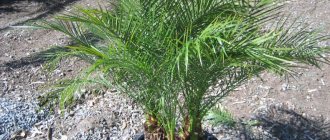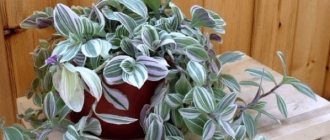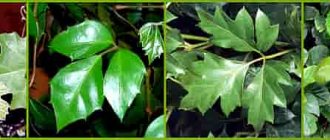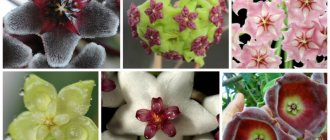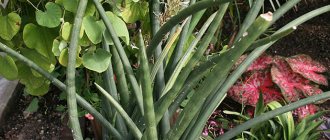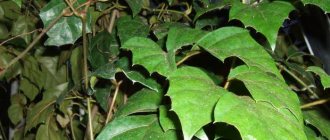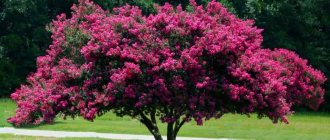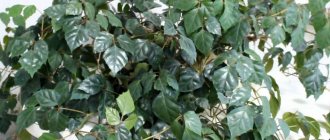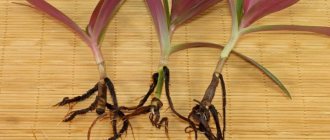Nightshade (Solanum) is a shrub from the nightshade family, the genus of which has about 1,700 species. South American countries with a tropical climate are considered the homeland of nightshade. In the wild, you can find annual and perennial herbaceous plants in the form of shrubs and trees, the stems of which can creep or stand upright, and the fruits are mostly poisonous. Among the nightshades there are also edible species such as potatoes, tomatoes and eggplants.
A small number of nightshade representatives are suitable for cultivation at home - the most common are edged, pepper and dark brown nightshades, the fruits of which are compared to small tomatoes, cherries or Mexican peppers. These Latin American machos are able to please their owners with a decorative look all year round. However, to do this you need to know some tricks of caring for this plant.
Indoor nightshade: a piece of bright summer in the middle of winter
Solanum (Solanum) is popularly known as: nightshade, coral bush, indoor cherry, Chinese cherry, Cuban cherry, Jerusalem cherry. The nightshade houseplant is a low, evergreen, deciduous shrub native to South America and the island of Madeira with oblong, glossy leaves.
The unusualness of nightshade remains all year round: the branches are simultaneously showered with flowers, green ovaries and bright orange ripe berries, which are really very similar to cherries.
Unfortunately, such a bright representative of the nightshade family is poisonous . It should not be kept in a house where there are small children who can pick and taste the poisonous berry. If the fruits of nightshade are not eaten, then there is nothing to be afraid of - the plant cannot cause any harm.
Is home nightshade dangerous?
Any part of the nightshade is poisonous. Under no circumstances should you eat berries. They taste unpleasant and bitter, but small children can eat them out of curiosity. Despite the fact that they most likely will not eat a large amount of these fruits, they will most likely have indigestion. It also happened that the child swallowed the fetus whole or stuck it into the respiratory tract.
Indoor nightshade is a dangerous plant, and it is not recommended to grow it in an apartment where there are small children; it would be better to wait until they grow up.
Varieties
More than 1,700 species of Solyanum grow in the tropics and some temperate regions. But we will consider only two of them, which are most often grown at home.
False pepper nightshade – S. pseudocapsicum. An erect evergreen shrub, growing up to 120 cm. Leaves with short petioles, oval or lanceolate, glabrous and slightly wavy.
The flowers are white, small, with five petals; the fruits are round, red or yellow, up to 1.5 cm in diameter. Originally from o. Madeira. Low-growing forms of decorative nightshade have been bred for indoor cultivation.
Pepper nightshade – S. capricasrum. Much smaller in size than false pepper, it has smaller berries and more tender shoots, green with a grayish tint. At home - in Uruguay and Southern Brazil, it grows in forests. The most popular varieties are: Craigii - with multi-colored fruits and Variegatum - a variegated variety.
Popular plant species
For decorative use and growing at home, there are only a few types of solanum. The most common:
- False pepper . A low shrub, densely dotted with small oblong leaves. This species grows up to 40-50 cm. It reaches the height of its beauty at the end of autumn, when the bush is densely dotted with fruits. This is what can often be seen on the shelves of flower shops on New Year's Eve. In such a bright and attractive form, the flower will remain all winter.
- Pepper-shaped . The species is slightly different from its relative. It is a little smaller in height and not so densely covered with fruits. But its shoots are decorated with an attractive velvety cover of a bluish tint. Unlike its relative, the flower is not poisonous at all, but on the contrary, has medicinal properties. The dried fruits of this nightshade are used to treat throat diseases. Therefore, people also call it “anti-angina”.
- Jasmine-like . It has clear differences from its two previous relatives. It is very similar to a vine. Its main aesthetic value is its delicate white or light blue flowers. The inflorescences consist of 5 oblong petals. The leaves are also oblong in shape. This flower reaches 1.5 m in length.
False pepper
Pepper-shaped
Jasmine
Conditions of detention
Caring for an indoor nightshade flower assumes the optimal spring-summer air temperature for solanum is about +15 +25°C. With the approach of cold weather, the bush will need to lower the temperature level - to +13 +15°C. Lighting also plays a huge role. It should be borne in mind that nightshade loves bright light, but not heat.
humidity level in the room with a hygrometer - it should not be lower than 60%. If there is insufficient humidity, it is necessary to spray the plant daily and place it in a tray with wet expanded clay or pebbles once a week.
Features of cultivation
Physalis likes to grow in a sunny place. It can also withstand partial shade, but in this case there will be fewer flowers - which means there will be fewer lanterns. It is planted with seeds or seedlings. In this article we will look at sowing seeds in the ground.
Neutral or calcareous soil is suitable for physalis, but acidic soil is destructive for it; the pH level should not exceed 4.5. When digging, it is good to add organic matter to the soil, but not fresh manure, but compost, humus or rotted manure in the amount of 1 bucket per square meter.
The composition of the soil can be as follows:
- peat - 2 parts,
- compost/humus/rotted manure - 1 part,
- garden soil - 1 part,
- sand - 1/2 part.
Seed preparation
- Before sowing, the seeds should be kept for half an hour in a 1% solution of potassium permanganate for disinfection.
- Then they are washed in running water and laid out on gauze or paper napkin to dry.
For disinfection, physalis seeds should be kept in a 1% solution of potassium permanganate.
You can sow in open ground at an air temperature of +20 o C and soil temperature of +5 o C, approximately at the end of May or beginning of June. You can plant decorative physalis in the fall: at the end of September or beginning of October.
Sowing seeds in open ground
It is better to sow physalis with hatched seeds. For this:
- After disinfection, the seed is kept in a damp cloth for several days, periodically wetting it. The timing of hatching depends on the temperature in the room and the year the seeds were collected.
It is better to sow pre-hatched physalis seeds - this will ensure greater germination
Caring for physalis in open ground
Decorative physalis does not require special attention to itself, but if you take care of it properly, the plant will definitely become a wonderful decoration of the site. Care includes the following points:
- watering: physalis is drought-resistant, but for more abundant fruiting during dry periods, it is advisable to water it once or twice a week;
- weeding and loosening: the plant needs loose soil so that the roots are supplied with oxygen, so frequent loosening should be carried out;
Physalis requires frequent loosening to enrich the roots with oxygen.
When preparing a solution of mullein, it is diluted with water in a ratio of 1:10 and left for several days to allow the mixture to ferment.
Wintering and replanting
For the winter, decorative physalis remains in the soil. Its above-ground part is completely cut off. The plant does not need special shelter, but it is better to mulch the soil with humus or peat; you can also use fallen leaves.
Since decorative physalis is quite aggressive and quickly spreads throughout the entire area, it is better to dig it up every 5–7 years and move it to a new place.
My personal experience of growing ornamental physalis confirms the fact that it is unpretentious and does not require much attention. It responds well to organic feeding, easily reproduces by dividing the bush, loves a sunny area and loose soil. To limit “spreading,” it is better to plant it in a limited space (for example, at least in the same barrel without a bottom).
Video: how to avoid physalis spreading across the area
Reproduction
Homemade nightshade can be grown from seeds or cuttings. Depending on the planting method, the fruits may be more or less large. When grown from seeds, the bush usually grows strong and bears fruit well. When propagated by cuttings, the plant requires more time to adapt and take root in the new soil.
Nightshade seeds are sown in late February - early March, using the following substrate composition :
- peat 1 part;
- clay soil 3 parts;
- sand 1 part;
- drainage.
Nightshade seeds are sown at a distance of 20 mm from each other, pressed 1 cm into the ground, watered and placed on a windowsill with good lighting. When the shoots (after 8-10 days), they need to be shaded a little. Within a week, when the young shoots gain strength and produce 2-3 leaves, they are transplanted into separate containers. For grown 10-centimeter plants, pinch the top , remove the side shoots, giving the bush the shape of a ball.
Your long-time dream to know: how to grow ginger on a windowsill? We turned it into a valuable article.
Read with us about the rules for caring for asparagus at home.
Decoupage of a flower pot https://sad-doma.net/polezno/svoimi-rukami/dekor-gorshkov.html can be easily created with your own hands, find out how - follow the link.
Reproduction methods
Houseplants are propagated in two ways:
- Seeds.
- By cuttings.
The seed method is simpler. Natural sowing occurs after the fruits ripen. The berries fall, break, and the seeds fall into the soil themselves, if the width of the pot allows. When the seedlings grow up, they are dug up and transplanted into separate containers.
The seed can be saved and planted in a wide container in the spring. They are not buried deep into the soil, just laid out on the surface and sprinkled lightly with sand. The sowing is covered with film or glass and placed in a room with a temperature of +20-22 degrees for germination. Shoots appear after 14 days. As the seedlings grow, they dive twice.
The second method is cuttings, used in spring and summer after pruning the bush. The branches are not thrown away. They choose the strongest and healthiest ones and root them. At this time, the roots of the cuttings grow well. A mixture consisting of equal parts sand and peat is used as a substrate. You can only take sand or vermiculite.
For rooting, take shoots with 2-3 leaves. Containers with cuttings are covered with film to create a greenhouse effect. During the process, the seedlings are pruned several times to make the bush more branched. Young plants with a developed root system are transplanted into a soil mixture of turf, humus soil and sand in a ratio of 1:2:1. A drainage layer must be made at the bottom.
Winter and summer nightshade care
Caring for a nightshade indoor plant in the cold and warm seasons has its own distinctive features. Features of seasonal care spring-summer .
- Young seedlings are watered as the soil dries.
- During the growth period, fertilizing is not needed. It is enough to carefully loosen the soil along the edges of the flowerpot so as not to injure the roots.
- When a nightshade blooms, it needs help transferring pollen from one flower to another (to pollinate).
- Upon reaching the age of 4-5 years, the plant is transplanted into a substrate mixed with turf.
- With the onset of summer, the flower is taken out into the open air to a shaded place protected from drafts.
- Water abundantly, adding fertilizer to the soil at least once every 2 weeks with a mixture of useful substances for tomatoes. Liquid fertilizers such as “Ideal” or “Rainbow” also give a good effect.
- Spray the leaves twice a day - morning and evening.
Features of seasonal care autumn-winter.
- As cold weather approaches, reduce the intensity of fertilizing and watering (water once every 10 days with soft water without chlorine). Nightshade should be in a dormant period from October to February.
- The pot with solyanum is placed in a cool, illuminated place with high humidity.
- Ventilate the plant once a week.
- At the end of February, the cherries will begin to wake up. During this period, you need to increase watering and start spraying.
How to care
Ornamental nightshade is a fairly heat-loving plant . He simply adores sunlight (but not direct sunlight), but cannot stand intense heat and dry air.
Room temperature
Will feel comfortable at a temperature of 15-20 degrees Celsius during the summer period. In winter, the room should be cooler: 12-15 degrees Celsius.
If nightshade is too hot, its fruits will quickly dry out and crumble.
Air humidity
The humidity level in the room should not fall below 60% and rise above 80%. The higher the humidity, the more often you need to spray nightshade with purified water at room temperature.
Watering
If watered incorrectly, nightshade may begin to dry out.
Frequent, abundant watering is required during the period of growth and fruit formation. In winter, the frequency of watering is reduced.
Feeding during care
The plant needs additional feeding in the warm season . The more nutrients it receives during this period, the more and longer it will bloom and bear fruit. As a top dressing, use regular fertilizer for flowering plants, 2 times a month.
With proper care, comfortable humidity, timely watering, and optimal temperature conditions, all three indoor varieties of Solanum will delight others for a long time with beautiful flowers and bright fruits.
False pepper nightshade is a very beautiful, but poisonous plant. And pepper nightshade is a less attractive, but very useful flower.
Difficulties and reasons for their occurrence
Few fruits mean the bush is not pollinated enough. During the flowering period, you need to carefully transfer pollen from flower to flower with a soft brush or cotton swab.
Fruits and leaves fall . The cause is usually too high temperature and humidity in the room.
Pest infestation . The reason is insufficient air humidity.
Solyanum, like other nightshades, can be affected by whitefly . Greenish larvae settle on the back of the leaves and suck the juice out of them. First, the leaves become covered with spots, then dry out and fall off. If you touch a diseased plant, a swarm of small white flies flies out of it.
Aphids attack more often in the summer, especially if the pot of nightshade is taken out into the fresh air. Affects the tops of stems and leaves. In both cases, plants need urgent treatment with insecticides: actellik, decis, fitoverm, inta-vir, etc.
This is how exotic it is and unlike anyone else - Chinese cherry, also known as Jerusalem cherry, Cuban cherry, or simply nightshade . It belongs to the category of ornamental plants that do not tolerate loneliness. Feeling a loving heart nearby that cares and helps is the main thing for nightshade.
Give him a small piece of your kindness and attention, and he will delight you all year round with his lush greenery and unusual bright fruits.
And for those who like to know more, we invite you to watch a video about caring for a nightshade houseplant
Pests of nightshade
Sometimes “uninvited guests” appear and happily settle on pepper nightshade. These include:
- A whitefly whose larva sucks juice from the underside of leaves. The leaf blade loses its elasticity and whitish spots form on it. The leaves gradually turn yellow and fall off. The main symptom is a swarm of small midges that rise from the leaf with a slight touch. Affected leaves and flowers are removed.
- Greenhouse aphids usually settle on a plant when it is taken outside in the summer. Being on the underside of the leaves, it sucks the juice from them. The leaf becomes lethargic, faded, and falls off over time. Traditional methods are used; in case of severe infection, chemicals are used.
- Red spider mites also feed on plant sap. It can be detected by a light white cobweb enveloping the leaves. Small reddish bodies of pests are visible on the underside of the leaf. They usually appear on bushes if the air in the room is too dry. To combat, moisten the room and treat the plant with acaricides (anti-tick medications).
All activities involving the use of “chemistry” are carried out in the fresh air. If this is not possible, then there should be no children or pets in the room. When processing, use gloves and a mask, strictly follow the instructions.
Solyanum pseudocapsicum, which is not so difficult to care for at home, will fit well into the interior of the apartment, give the “green corner” a special zest and delight with bright fruits that will bring memories of summer on long winter evenings.
Indoor nightshade
The perennial evergreen dwarf plant nightshade (solanum) can be a wonderful decoration for any room if you know how to care for solanum. Growing in the form of a bush or small tree, it has luxurious decorative qualities - all year round there are white flowers, dark green round ovaries and bright red fruits on nightshade branches. The trunk of indoor nightshade is woody, the leaves are small and elongated.
Nightshade is native to the island of Madeira and South America. The plant is considered an annual, but experienced gardeners have learned to extend its life. Caring for indoor nightshade involves annual replanting, providing good lighting and regular watering. To form a luxurious, lush crown, pruning is necessary.
Nightshade - home care
Despite the fact that indoor nightshade was brought from a tropical climate, the flower has perfectly adapted to the conditions of mid-latitudes. In the summer, it can be taken out into the garden or onto the balcony, to which the plant will respond with abundant flowering within a few days. If the plant is not provided with proper lighting, it will stretch out and there will be few flowers.
Video - caring for indoor nightshade
Temperature Nightshade is a heat-loving plant. In the summer months, the optimal temperature will be +20-+25 degrees. In winter, when active vegetation slows down, nightshade tolerates cooler temperatures, but not lower than +15 degrees.
Moistening and watering Indoor nightshade “loves” moisture, so on hot days you sometimes have to water it every day. The soil in the pot should be constantly slightly moistened so that the nightshade roots do not dry out completely. Experienced gardeners use special automatic watering devices to maintain sufficient moisture.
The plant needs to be sprayed with a spray bottle every few days. This procedure will provide a certain humidity. Also, do not install it near heating devices.
Replanting Indoor nightshade requires regular replanting. This is done at the moment when the plant’s flowers completely fall off. A mixture of peat, leaf soil and turf is ideal as a substrate. Expanded clay or clay shards must be placed at the bottom of the pot to ensure drainage.
Growing conditions for solanum
Nightshades belong to quickly degenerating plants that require regular replacement. Repeat flowering and fruiting can be achieved only by keeping the plant cool, regular pruning and high-quality fertilizing. Lighting is critical for fruiting.
Lighting and placement
Indoor nightshades are so light-loving that it is best to place them exclusively on window sills. For enviably abundant fruiting, nightshades will need a sunny place, but with protection from the aggressive midday sun. Eastern and western window sills are ideal for this plant.
In winter, the lack of light must be compensated by moving to southern windows or additional lighting.
Temperature and ventilation
Nightshades cannot be grown without lowering the air temperature during fruiting (the fruits last a long time only at temperatures below 18 degrees). From November to the end of February, it is better to keep the bushes at a temperature of 6 to 10 degrees, with maximum permissible values of indicators from 12 to 15 degrees.
Without a cold winter, nightshades do not bloom again, and therefore do not bear fruit. The plant is transferred back to room temperature in early spring or February, immediately after transplantation. But even in summer, it is better to protect nightshade from the heat, limiting maximum temperatures to 23-25 degrees. The beauty of the bushes and the abundance of fruiting will only benefit from differences between day and night temperatures.
Nightshade loves fresh air; in the summer it is better to move it to the garden or balconies. While staying indoors, especially during the cool period in autumn and winter, the plant should be protected even from small drafts.
Indoor nightshade - propagation by seeds and cuttings
Nightshade can be propagated by seeds and cuttings. In the first case, seeds from ripened fruits are used. They are sown in peat or any other loose soil and lightly sprinkled with sand. The soil should be constantly moistened with a spray bottle. It is better if the container with the seeds is placed in a warm place and covered with film. As they germinate, young plants dive 1-2 times.
Indoor nightshade - propagation by seeds
You can grow indoor nightshade faster by cuttings. The branches remaining after pruning are used as cuttings. They take root well in a substrate of peat and leaf soil and grow very quickly, producing new shoots.
Solanum propagation
Indoor nightshade is easy to grow from seeds that are sown together with summer plants, superficially, lightly covering with sand, under glass or film. Young plants are kept in the brightest light possible and are pruned after a pair of true leaves appear, with the pots being changed again to permanent ones after they have grown to a height of about 15 cm. It is very important to start pinching as early as possible.
Nightshade can also be propagated by cuttings, rooting young, non-fruiting shoots remaining after pruning or summer semi-lignified shoots under a cover in light, slightly moist soil.
Source
Diseases and pests of indoor nightshade
The main pests that very often attack indoor nightshade are whiteflies and aphids. To avoid trouble, it is best to constantly monitor the condition of the leaves. If the plant is already affected, insecticides are used against insects. You can protect nightshade from pest attacks by providing it with good ventilation and appropriate air temperature.
Other problems that can overshadow the owners of a charming bush include the lack of fruits, which give the plant its decorative appearance. In this case, artificial pollination of flowers will be required if the nightshade is indoors, or you can simply take it outside for a few days.
Another feature of this ornamental tree is its poisonous fruits. It is believed that in the homeland of nightshade they are used to prepare medicinal decoctions, but you still need to be careful and keep the berries away from children.
What is the appeal of indoor nightshade?
As you already understood, a houseplant with orange berries is nightshade, or solanum. Belongs to the nightshade family. Its homeland is the tropical part of South America.
There are various rumors about him. Some flora lovers are afraid to keep it at home. It turns out that the bright berries for which the flower is valued have poisonous properties. The fruits should not be eaten. Be careful if there are small children in the house. Place the plant on high, inaccessible shelves and cabinets, or avoid the flower altogether.
Nightshade does not produce any toxic fumes. If he just stands indoors, he won't cause any harm.
Nightshade is a small evergreen shrub. The leaves are shiny, oblong in shape. The fruits are large, similar to cherries, and have a fiery orange color.
A houseplant with orange berries, a photo of which will prove its beauty, will, with proper care, delight you with its ovaries and flowers. All this creates a beautiful picture. Therefore, nightshade is an excellent room decoration and addition to the interior.
The most popular varieties
The nightshade family has about 1,700 members. The most common types of solyanum are kept at home, as well as in gardens and greenhouses.
False pepper
The shrub is about 30-50 cm high. The leaves have a rich green color and grow quite densely. It blooms with small white flowers almost constantly. As the fruits ripen, they change color from green to red. The flower is kept mainly as an indoor plant due to its small size. A dwarf subspecies with a height of only 30 cm is presented at the flower market.
Pepper-shaped
The size of the pepper nightshade is smaller than that of the false pepper nightshade. The leaves are more fragile and have a grayish tint. The berries and flowers are small. The fruits stay on the branches for up to 4 months. A decoction of the berries is used as a gargle for sore throats, but you should not drink it.
Curly
This type of nightshade is an evergreen vine. The flowers are shaped like stars, the fruits are light yellow in color. It is unpretentious in maintenance and is often used to decorate gazebos and walls. Unlike many representatives of its species, it tolerates cold well. Therefore, it can be used on external facades.
Vendlana
Solyanum vendlana is a climbing evergreen shrub that can grow up to 6 m in height. There are small thorns on the branches. The leaves are long (up to 10 cm), dissected in shape. The lower foliage is larger (up to 25 cm). This species has very beautiful purple-lilac flowers in the shape of a bell.
Which type of nightshade to choose is a matter of taste. It is also worth considering the size of the flower. Large spreading representatives are suitable only for large houses.
Kinds
Jasmine nightshade / Solanum jasminoides
This species is native to Brazil. Representatives of the genus are evergreen shrubs with climbing, long (up to 4 m in length), hairless, thin shoots. The leaves that grow on the upper part of the shoot have an elongated ovoid shape, with a solid edge, simple, pubescent; the leaves on the lower part of the shoot are usually trifoliate, up to 7 cm long and up to 3 cm wide, shiny. It usually blooms from early spring to mid-autumn, quite profusely. The flowers are light blue in color, reach 2 cm in diameter and are collected in apical panicle inflorescences. The fruits are bright red berries up to 1.5 cm in diameter.
Giant nightshade / Solanum giganteum
These plants are evergreen branching shrubs that grow up to 6 m in height. The branches of the species are thick, covered with whitish hairs and short thorns. The leaves are dark green (above), elongated-oval in shape (up to 25 cm in length), covered with white hairs below. The flowering period occurs in mid-to-late summer. It blooms with small hanging flowers of a dark purple hue, which are collected in apical corymbose inflorescences. It is not often grown indoors; the species is more suitable for growing in greenhouses.
Seaforth's nightshade / Solanum seafortianum
The species is very decorative, represented by evergreen shrubs with climbing shoots, growing up to 5-6 m in height. The leaves of the species are ovate-lanceolate, but more often simply lanceolate, slightly wavy, odd-pinnate, the edge of the leaf is entire. The inflorescence is paniculate, axillary. Flowering period: from early spring to mid-late autumn. The flowers are light purple, drooping. The fruit is orange-red in color and ovoid in shape.
Wendland's nightshade / Solanum wendlandii
The species grows under natural conditions in the mountainous regions of Central America at an altitude of 2-3 km. Representatives of the species are branched evergreen shrubs growing up to 4 m in height. The branches are climbing and covered with small thorns. The leaves on the shoot grow differently: in the upper half the leaves have an oblong-elliptical shape, up to 10 cm in length; the leaves at the bottom are dark green, trilobed, up to 25 cm long and up to 10 cm wide. Flowering period is summer. Inflorescence – panicle: apical, corymbose. The flowers grow densely, purple in color, reaching 5-6 cm in diameter. The fruit is bright purple.
Nightshade / Solanum crispum
This species is a fast-growing ornamental flowering plant with twining shoots. Flowers are collected in apical corymbose inflorescences, purple-blue in color.
Nightshade / Solanum pseudocapsicum
A representative of the genus is a half-meter tall non-deciduous subshrub. The shoots branch. The leaves are elongated-lanceolate, dark green in color. With good care, the flowering period lasts all year round, as does fruiting. The flowers are white, grow singly, and are small in size. The fruits are similar to cherries; depending on the degree of ripening, they can be from green to bright red in color, they are bitter, and the fruits cannot be eaten.
Pepper nightshade / Solanum capsicastrum
It can also be found under the popular name “Jerusalem cherry”. A low, non-deciduous subshrub (reaches just over 0.5 m in height). The leaves have a wavy edge, different sizes, a greenish-gray tint, and have an elongated lanceolate shape. Flowering period: June-August. The flowers are white, small, and grow singly. The fruits are poisonous berries up to 2 cm in diameter, red in color.
How can you propagate a plant?
Regarding nightshade, there are two methods of propagation - growing from seeds and cuttings.
Planting seeds
When propagating nightshade from seeds, it takes a certain amount of time. But plants grown in this way are larger and bear fruit better.
Solyanum seeds are planted in late winter and early spring. The most suitable soil consists of clay soil, peat and sand in a ratio of 3:1:1. The grains are planted at a distance of 2 cm from each other, slightly pressed into the ground, and then watered.
Features of care in summer and winter
Indoor nightshade is unpretentious, although it also requires some attention. Its care varies depending on the season.
Location
If you want nightshade to bloom, you will have to find a place with good lighting for it. In the shade it loses its spherical shape, its sophistication and becomes too elongated. The ideal option is diffused light.
Winter. In winter and autumn, the flower is placed on southern windowsills.
Summer. From mid-April, the saltums are shaded so that solar radiation is not too intense. You can place the pot on the balcony. In summer, in country houses, nightshades are taken out onto the veranda.
Temperature
Winter. During the cold period, nightshade loves a temperature of 13-15C. With this mode, the flower will delight the owner with berries longer.
Summer. In the summer season, the plant is comfortable at standard room temperature. Does not tolerate constant heat well. If possible, nightshade is exposed to fresh air.
Watering
At any time, slightly moist soil is maintained for the solyanum, eliminating the formation of a “swamp”.
Winter. During the cold season, moderate watering is provided. The lower the air temperature, the slower the soil dries out.
Summer. When it is hot or the plant produces fruit, water it generously. Nightshade loves to be sprayed with warm water. The procedure is especially relevant in spring and summer.
Top dressing
Winter. In winter, the flower is fed with a half portion of fertilizer at monthly intervals or not fed at all.
Summer. If you want to see nightshade blooming, you will have to fertilize it. In summer, the flower should be fed twice a month. Purchase fertilizer designed for the flowering period.
Trimming
Nightshade is a plant that periodically requires pruning. Without this procedure, it loses its beautiful shape. Pruning is necessary in late spring and early summer, when the leaves of the plant turn yellow. To stimulate the growth of side shoots, pinch their ends and the main stem.
Transfer
The optimal time to transplant a flower is from the beginning of spring until the beginning of active growth. Before the procedure, the solyanum is cut by a third. Provide the seedling with loose soil where oxygen can pass well. Don't forget to put drainage at the bottom.
It is worth keeping in mind that a houseplant with orange berries quickly loses its decorative appearance. Therefore, flower growers prefer not to replant it, but to separate new cuttings.
Proper care of indoor nightshade
Conventionally, caring for decorative nightshade can be divided into three stages:
- Spring is the stage of planting and replanting a plant.
- Summer is the period of growing season and flowering.
- Autumn-winter is the time of fruiting and subsequent dormancy.
The basic principles of care are to provide the necessary conditions:
- Lighting. Achieving a brightly decorative flower is possible only by providing bright but diffused light, which the plant needs throughout the year. The eastern and western sides of the room are well suited for this. The south side will be very useful in winter. If there is not enough light, the development of nightshade will be weak, and flowering and fruiting will be poor.
- Humidity and temperature conditions. The optimal room temperature for the full development of the plant is considered to be 18-25 degrees in spring and summer, and in winter it should be reduced to 12-15 degrees. Otherwise, your tropical friend will drop all the berries and leaves. You should also worry about protecting the nightshade from drafts. Humidity should always be high. To ensure this condition, the flower is systematically sprayed. It would be a good idea to place the pot with the plant in a shallow bowl with moistened rocky material so that there is no contact with water. With increased dry air, fruiting occurs later and is weaker.
- Watering. In the spring and summer, when the plant is intensively developing and blooming, it should be watered frequently and abundantly. Irrigation is carried out immediately after the top layer of soil dries, which occurs quickly, since the nightshade sweats intensely, evaporating moisture through the foliage. In winter, watering should be reduced.
- Feeding. To bear fruit, nightshade requires a lot of strength, which can be provided by feeding. You can use complex liquid fertilizer for house flowers that are blooming. It should be applied during the growing season and during fruit formation. Fertilizing is carried out once every two weeks, and when the fruits have already set, that is, in winter, the interval between fertilizing should be reduced to once a month, using half the fertilizer rate.
- Trimming. Nightshade pruning is carried out annually. At the end of winter or early spring, all branches of the bush are shortened by a third. This procedure is usually performed after the fruits have fully ripened and when the leaves turn yellow. In the fall, it is recommended to pinch the plant, but only those shoots where there are no buds or fruit ovaries. This will provide better bushiness.
- Transfer. After pruning, the ornamental shrub needs to be transplanted into renewed soil saturated with microelements. In this case, the pot should be slightly larger than before. But in some cases, replanting may not be necessary, because the nightshade flower quickly loses its decorative effect and it is often easier to grow a new plant.
What difficulties do flower growers face?
If you follow the rules of care, nightshade feels good indoors. However, certain problems may arise during cultivation.
The leaves are falling
Perhaps the problem is lack of moisture. The problem is especially acute in hot weather. This can also happen with excessive watering, when the roots begin to rot.
The berries are falling
If nightshade fruits begin to fall at the wrong time, it lacks light and humidity. It is worth moving the pot to a place where there is more light and spraying it more often.
No ovaries
The reason is that pollination did not occur. You can do this yourself using a soft bristle brush. Flowers are naturally pollinated only in the open air.
Spider mite
This pest affects many indoor plants. Its appearance is determined by the formation of small cobwebs and dark spots on the foliage. The plant begins to gradually dry out. To eliminate the problem, the foliage is sprayed with chemicals (Decis, Phosbecid), alternating with a soap solution.
